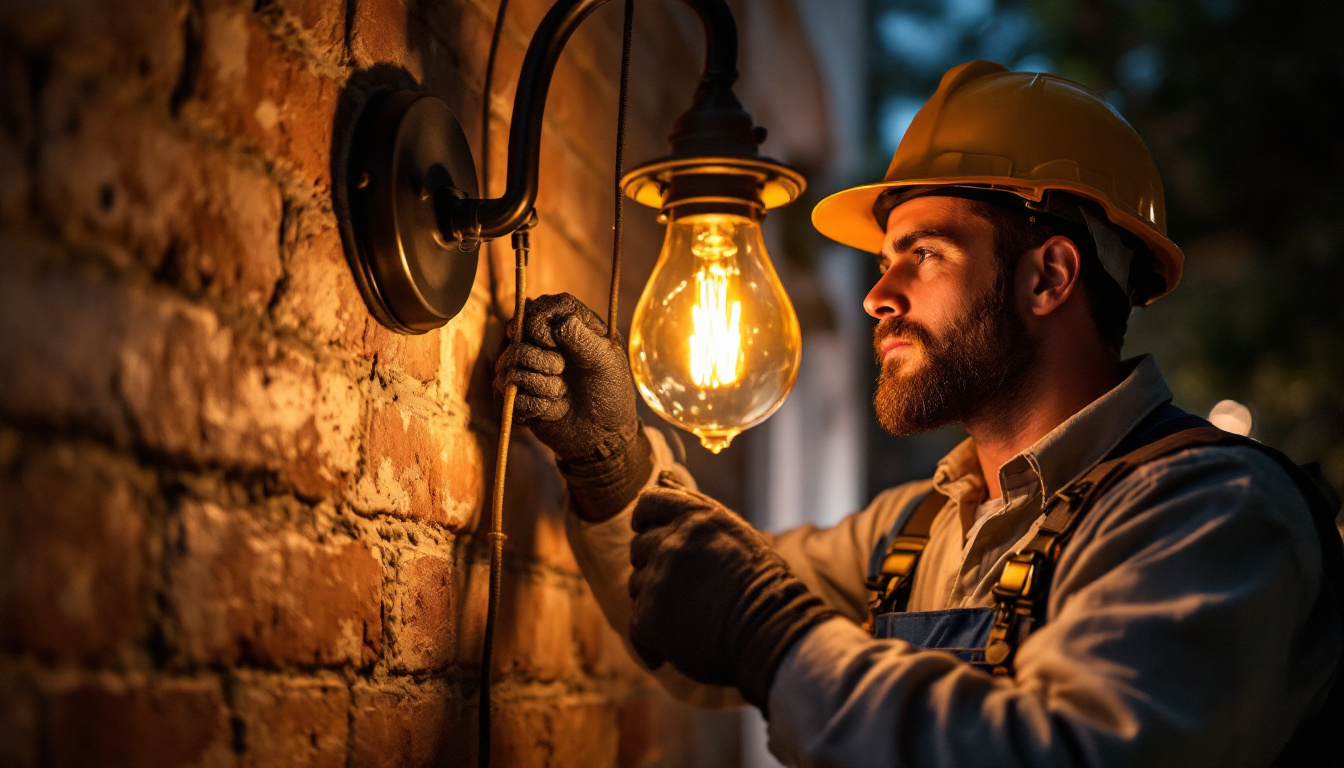

The world of lighting design and installation is continuously evolving, driven by advancements in technology and changes in consumer preferences. Among these innovations, troffer lighting has emerged as a game-changer for lighting contractors. This article explores the transformative impact of troffers on the industry, detailing their benefits, applications, and how they are reshaping the way contractors approach their work.
Troffer lights are recessed lighting fixtures that are commonly used in commercial and institutional settings. Typically installed in a grid ceiling, these fixtures provide a sleek and modern look while delivering effective illumination. The design of troffers allows them to blend seamlessly into the ceiling, making them a popular choice for offices, schools, hospitals, and retail spaces.
Troffers come in various sizes, shapes, and configurations, but the most common type is the 2×4-foot model. They can be equipped with different lighting technologies, including fluorescent, LED, and even smart lighting options. The functionality of troffers extends beyond mere illumination; they are designed to enhance the overall aesthetic of a space while providing even light distribution.
One of the key features of troffers is their energy efficiency, particularly when using LED technology. LED troffers consume significantly less energy than traditional fluorescent models, leading to reduced utility costs for businesses. This energy efficiency is not only beneficial for the environment but also aligns with the growing demand for sustainable building practices. Furthermore, many LED troffers have a longer lifespan compared to their fluorescent counterparts, which means less frequent replacements and lower maintenance costs over time.
Troffer lighting is versatile and can be used in a wide range of applications. In office environments, they provide uniform lighting that reduces glare and enhances productivity. In educational institutions, troffers ensure that classrooms are well-lit, fostering an optimal learning environment. Healthcare facilities benefit from troffers as they create a calming atmosphere while ensuring that patients receive adequate lighting for their needs.
Retail spaces also leverage troffers to highlight products effectively. By using adjustable troffers, lighting contractors can create dynamic lighting schemes that draw attention to specific merchandise, enhancing the shopping experience. The adaptability of troffers makes them an essential component in modern lighting design. Additionally, troffers can be integrated with advanced lighting control systems, allowing for features such as dimming, occupancy sensing, and scheduling. This not only improves energy efficiency but also allows businesses to tailor their lighting to suit various activities throughout the day, further enhancing the functionality of the space.
Moreover, the aesthetic appeal of troffer lighting has evolved with the introduction of decorative designs and finishes. Manufacturers now offer troffers that mimic the appearance of traditional light fixtures, allowing for a more stylish integration into architectural designs. This trend is particularly evident in hospitality settings, where ambiance plays a crucial role in guest experience. By combining functionality with design, troffers can contribute to creating inviting and visually appealing environments that cater to both practical and aesthetic needs.
For lighting contractors, the adoption of troffer lighting brings numerous advantages that can streamline their work processes and improve client satisfaction. Understanding these benefits is crucial for contractors looking to stay competitive in the industry.
One of the most significant benefits of troffers, particularly LED models, is their energy efficiency. By utilizing LED technology, troffers can reduce energy consumption by up to 75% compared to traditional lighting solutions. This reduction in energy use translates to lower electricity bills for clients, making it an attractive selling point for contractors.
Additionally, many regions offer incentives for businesses that invest in energy-efficient lighting systems. Contractors can leverage these incentives to provide clients with cost-saving opportunities, further enhancing their value proposition. The long lifespan of LED troffers also means reduced maintenance costs, as they require less frequent replacement compared to traditional bulbs. This longevity not only minimizes disruption in the workplace due to lighting failures but also contributes to a more sustainable approach to lighting, aligning with the growing emphasis on environmental responsibility in business practices.
Troffers are not just functional; they also contribute to the overall aesthetics of a space. Their sleek design allows for a clean and modern look that can elevate the ambiance of any environment. This aesthetic appeal can be a significant selling point for contractors, as clients increasingly prioritize design in their lighting choices.
Moreover, the versatility of troffers allows contractors to customize lighting solutions based on the specific needs of each project. Whether it’s adjusting the color temperature, brightness, or even integrating smart technology, troffers can be tailored to meet diverse client requirements. This adaptability not only enhances the contractor’s portfolio but also positions them as a go-to expert in lighting solutions. Furthermore, the ability to integrate advanced features such as motion sensors and dimming capabilities can lead to even greater energy savings and user comfort, making troffers an ideal choice for a wide range of applications, from office spaces to retail environments. As clients become more aware of the benefits of smart lighting, contractors who can provide these advanced solutions will find themselves at a distinct advantage in the marketplace.
While troffers offer numerous benefits, lighting contractors may encounter challenges when integrating these fixtures into their projects. Understanding these challenges is essential for developing effective strategies to overcome them.
Installing troffer lighting requires careful planning and execution. The fixtures must be compatible with the existing ceiling grid, and contractors need to ensure that electrical systems are adequately prepared for the new lighting. This may involve additional work, such as upgrading wiring or modifying the ceiling structure, which can increase project timelines and costs.
Furthermore, contractors must be knowledgeable about the various types of troffer lighting available. With options ranging from standard models to advanced smart lighting systems, selecting the right fixture for each project can be daunting. Continuous education and training are essential for contractors to stay informed about the latest developments in troffer technology. Additionally, understanding the specific lighting needs of different spaces—such as offices, retail environments, or industrial settings—can significantly impact the effectiveness of the installation. Each environment may require unique considerations, such as light intensity, color temperature, and energy efficiency, which can further complicate the decision-making process.
Another challenge that lighting contractors face is educating clients about the benefits and limitations of troffer lighting. Many clients may not fully understand the advantages of switching to LED troffers or may have misconceptions about the initial costs versus long-term savings. Effective communication is key to ensuring that clients have realistic expectations and appreciate the value of the investment.
Contractors can address this challenge by providing detailed proposals that outline the benefits of troffer lighting, including energy savings, maintenance costs, and aesthetic improvements. Offering case studies or testimonials from previous projects can also help build trust and confidence in the proposed solutions. In addition, hosting informational sessions or workshops can be an effective way to engage clients, allowing them to see the technology in action and ask questions directly. These initiatives not only enhance client understanding but can also foster a collaborative relationship, ensuring that clients feel involved in the decision-making process and more satisfied with the final outcome. As lighting technology continues to evolve, staying proactive in client education can set contractors apart in a competitive market.
The lighting industry is continually evolving, and troffer lighting is no exception. As technology advances, several trends are emerging that will shape the future of troffer installations.
One of the most significant trends in lighting is the integration of smart technology. Smart troffers can be controlled remotely, allowing for adjustments in brightness, color temperature, and even scheduling. This level of control not only enhances energy efficiency but also provides users with the flexibility to create customized lighting environments.
For lighting contractors, incorporating smart troffers into their offerings can set them apart from competitors. As more clients seek intelligent lighting solutions that can adapt to their needs, contractors who are knowledgeable about smart technology will be better positioned to meet this demand.
As sustainability continues to be a priority for businesses and consumers alike, the demand for energy-efficient lighting solutions will only grow. Troffers, particularly those utilizing LED technology, align perfectly with this trend. Contractors who emphasize the environmental benefits of troffer lighting can appeal to eco-conscious clients and contribute to a more sustainable future.
Moreover, the use of recyclable materials in troffer manufacturing is gaining traction. Contractors should stay informed about manufacturers that prioritize sustainability in their product offerings, as this can enhance their reputation and attract environmentally-minded clients.
Troffer lighting is undeniably transforming the way lighting contractors work, offering a blend of efficiency, aesthetics, and adaptability. As the industry continues to evolve, contractors who embrace the advantages of troffers will be well-equipped to meet the changing demands of their clients.
By understanding the benefits, challenges, and future trends associated with troffer lighting, contractors can position themselves as leaders in the field. The integration of smart technology and a focus on sustainability will not only enhance their offerings but also contribute to a brighter, more efficient future for the lighting industry.
In a competitive market, staying informed and adapting to new technologies will be crucial for lighting contractors. Troffers represent a significant opportunity for growth and innovation, and those who harness their potential will undoubtedly thrive in this dynamic landscape.
Ready to elevate your lighting projects with the efficiency, aesthetics, and adaptability of troffer lighting? LumenWholesale is here to empower you with spec-grade lighting products at unbeatable wholesale prices. Say goodbye to inflated markups and hello to a vast selection of high-performance lighting that meets the highest industry standards. With free shipping on bulk orders, you can ensure your projects shine with premium quality without breaking the bank. Don’t miss out on the perfect blend of quality, affordability, and convenience. Discover Wholesale Lighting at the Best Value today and transform the way you work with LumenWholesale.

Discover the secrets to maximizing efficiency and profitability in lighting warehouse stores with our expert tips tailored for lighting contractors.

Explore the fascinating history and modern resurgence of gas lighting in this insightful article tailored for lighting contractors.

Discover why purchasing architectural cylinder lights in bulk from local distributors might not be the best choice.

Discover the ultimate guide to 4′ LED bulbs, exploring their benefits, energy efficiency, installation tips, and how they can transform your lighting experience.
Get notified when NEW deals are released.
Optimize your budget with wholesale discounts.
Only top-quality, specification-grade lighting products.
No additional costs at checkout - what you see is what you pay.
We understand the unique needs of contractors.